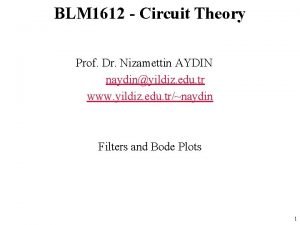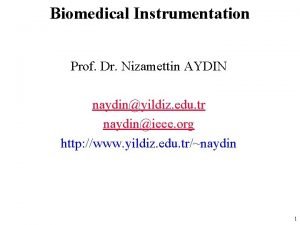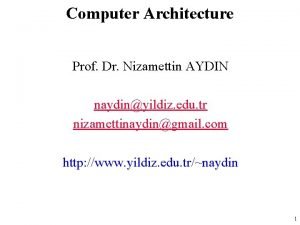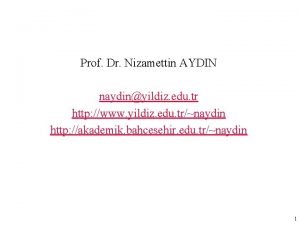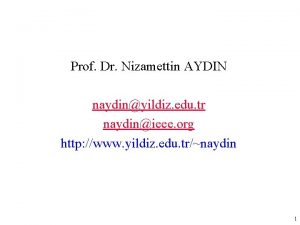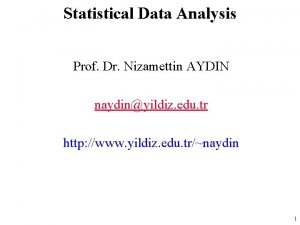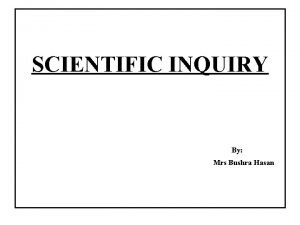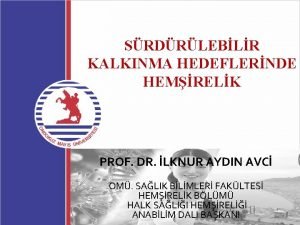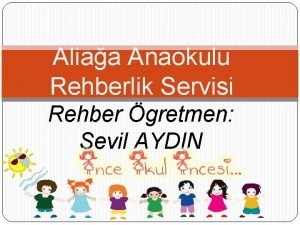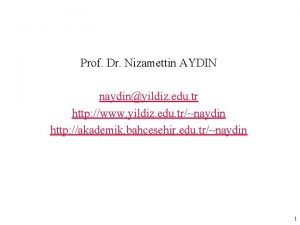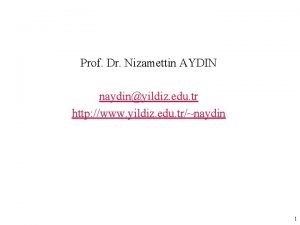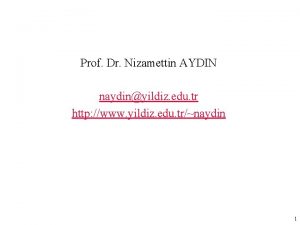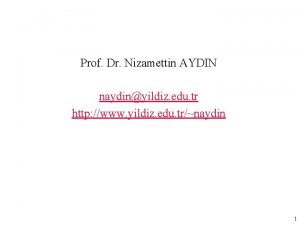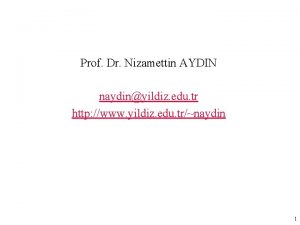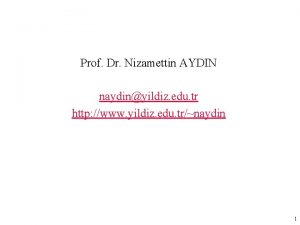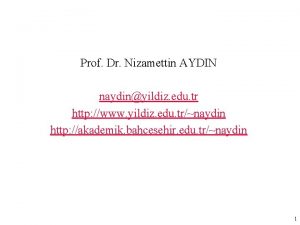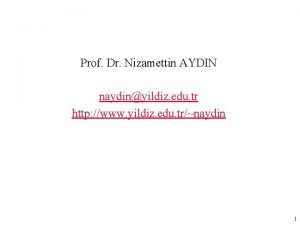Prof Dr Nizamettin AYDIN naydinyildiz edu tr http












- Slides: 12

Prof. Dr. Nizamettin AYDIN naydin@yildiz. edu. tr http: //www. yildiz. edu. tr/~naydin 1

Basic Definitions and Concepts 2

Systems Analysis and Design • Systems Analysis and Design is an interdisciplinary part of science, which can related to: – Systems analysis • Systems analysis is the study of sets of interacting entities, including computer systems analysis. This field is closely related to requirements analysis or operations research. It is also an explicit formal inquiry carried out to help someone (the decision maker) identify a better course of action and make a better decision than he might otherwise have made. – Systems design • Systems design is the process of defining the architecture, components, modules, interfaces, and data for a system to satisfy specified requirements. One could see it as the application of systems theory to product development. There is some overlap with the disciplines of systems analysis, systems architecture and systems engineering. 3

Definition(s) of system • A system can be broadly defined as an integrated set of elements that accomplish a defined objective. • People from different engineering disciplines have different perspectives of what a "system" is. • For example, – software engineers often refer to an integrated set of computer programs as a "system. " – electrical engineers might refer to complex integrated circuits or an integrated set of electrical units as a "system. " • As can be seen, "system" depends on one’s perspective, and the “integrated set of elements that accomplish a defined objective” is an appropriate definition. 4

Definition(s) of system • A system is an assembly of parts where: – The parts or components are connected together in an organized way. – The parts or components are affected by being in the system (and are changed by leaving it). – The assembly does something. – The assembly has been identified by a person as being of special interest. • Any arrangement which involves the handling, processing or manipulation of resources of whatever type can be represented as a system. • Some definitions on online dictionaries – http: //en. wikipedia. org/wiki/System – http: //dictionary. reference. com/browse/systems – http: //www. businessdictionary. com/definition/system. html 5

Definition(s) of system • A system is defined as multiple parts working together for a common purpose or goal. • Systems can be large and complex—such as the air traffic control system or our global telecommunication network. Small devices can also be considered systems— such as a pocket calculator, alarm clock, or 10 -speed bicycle. 6

Definition(s) of system • Systems have inputs, processes, and outputs. • When feedback (direct or indirect) is involved, that component is also important to the operation of the system. • To explain all this, systems are usually explained using a model. • A model helps to illustrate the major elements and their relationship, as illustrated in the next slide 7

A systems model 8

Information Systems • The ways that organizations – Store – Move – Organize – Process their information 9

Information Technology • Components that implement information systems, – Hardware • physical tools: computer and network hardware, but also low-tech things like pens and paper – Software • (changeable) instructions for the hardware – People – Procedures • instructions for the people – Data/databases 10

Analysis • The terms analysis and synthesis come from Greek – they mean respectively "to take apart" and "to put together". – These terms are in scientific disciplines from mathematics and logic to economy and psychology to denote similar investigative procedures. • Analysis is defined as the procedure by which we break down an intellectual or substantial whole into parts. • Synthesis is defined as the procedure by which we combine separate elements or components in order to form a coherent whole. 11

Design • Design as a noun informally refers to plan or convention for the construction of an object or a system (as in architectural blueprints, engineering drawing, business process, circuit diagrams, etc). • to design (verb) refers to making this plan. • No generally-accepted definition of “design” exists, and the term has different connotations in different fields. • However, one can also design by directly constructing an object (as in pottery, engineering, management, graphic design, etc). 12
